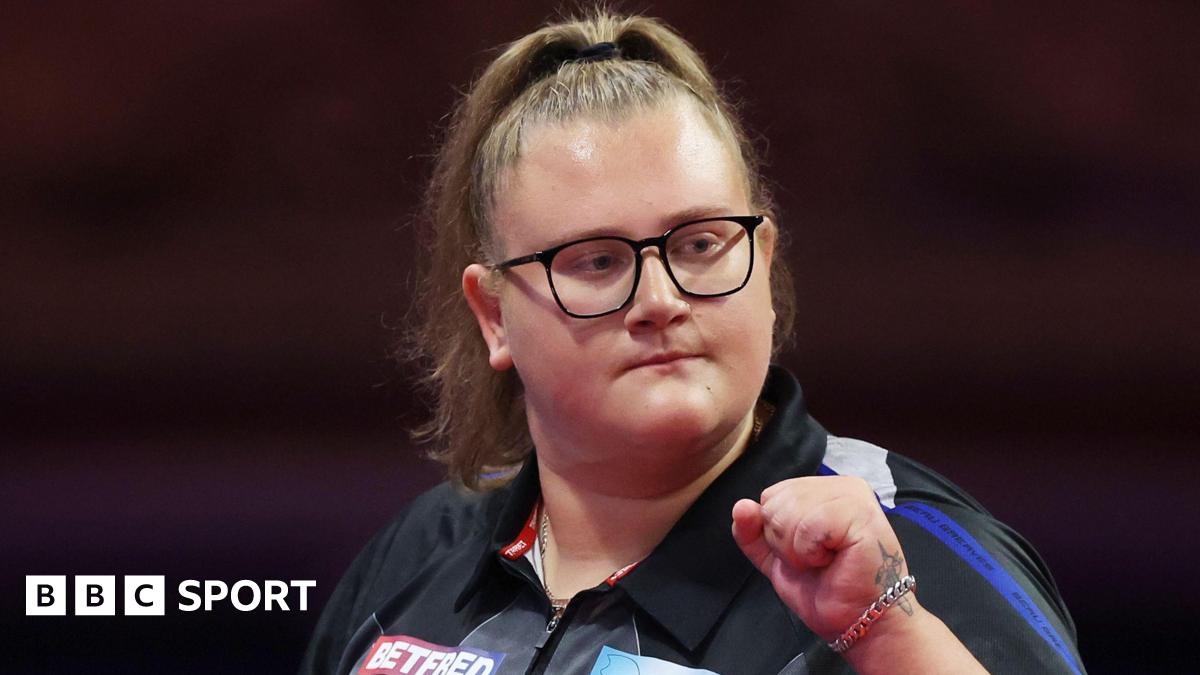- Keep Track of This Deal: Save 25% Off the Fitbit Versa 4 Smartwatch PCMag
- The Best Workout Accessories Under $50 to Buy Before Prime Day Ends Tonight Lifehacker
- Here’s how I built my home gym for less than a year’s worth of gym membership fees
Blog
-
Keep Track of This Deal: Save 25% Off the Fitbit Versa 4 Smartwatch – PCMag
-

Physical activity boosts cognitive performance more than ovulation
Physical activity boosts cognitive performance more than ovulation | Image Credit: © rawpixel.com – © rawpixel.com – stock.adobe.com.
Cognitive test performance is improved during ovulation, but performance is greater improved by physical…
Continue Reading
-

Live updates: Israel-Gaza ceasefire deal signed as hostages reunite with families
More than two dozen countries were represented at the Gaza summit in Egypt on Monday, as US President Donald Trump and other world leaders signed a ceasefire…
Continue Reading
-

New Clinical Trial Conducted at Sheppard Pratt Identifies Predictors of Response to Vagus Nerve Stimulation for Treatment-Resistant Depression
BALTIMORE, Oct. 13, 2025 /PRNewswire/ — The Journal of Clinical Psychiatry recently published results from the RECOVER trial, a landmark study examining vagus nerve stimulation…
Continue Reading
-

SpaceX hours away from scheduled Starship test flight in Texas
Oct. 13 (UPI) — SpaceX is planning the 11th flight test on Monday of its Starship, its two-stage, heavy-lift launch vehicle designed to one day take humans back to the moon and eventually to Mars.
The launch window will open at 6:15 p.m. CT at…
Continue Reading
-

Luke Littler: World champion suffers shock defeat to Beau Greaves in World Youth Championship
Beau Greaves emerged victorious from a 6-5 thriller against Luke Littler as she became the first woman to reach the final of the World Youth Championship.
Littler came into the tournament in Wigan on the back of his 6-1 demolition of world number…
Continue Reading
-

Greenpeace threatens to sue crown estate for driving up cost of offshore wind | Energy industry
Greenpeace is threatening to sue King Charles’s property management company, accusing it of exploiting its monopoly ownership of the seabed.
The environmental lobby group alleges the crown estate has driven up costs for wind power developers and boosted its own profits, as well as the royal household’s income, due to the “aggressive” way it auctions seabed rights.
The crown estate, as the legal owner of the seabed around England, Wales and Northern Ireland, is responsible for auctioning offshore wind rights. It has benefited from the huge growth in the industry, commanding hefty option fees from renewable energy developers to secure areas of the seabed to build their windfarms.
It made a £1.1bn profit in its financial year ended in March, double its level just two years ago.
Will McCallum, co-executive director at Greenpeace UK, said the estate should be “managing the seabed in the interest of the nation and the common good, not as an asset to be milked for profit and outrageous bonuses”.
“We should leave no stone unturned in looking for solutions to lower energy bills that are causing misery to millions of households,” he said.
“Given how crucial affordable bills and clean energy are to the government’s agenda, the chancellor should use her powers of direction to ask for an independent review of how these auctions are run. If the problem isn’t fixed before the next round, we may need to let a court decide whether or not what’s happening is lawful.”
Greenpeace argues the crown estate has a legal duty not to exploit its monopoly position as owner of the seabed around England, Wales and Northern Ireland, but that it is now in breach of this.
The lobby group said it was concerned the crown estate was rationing supply of the seabed to protect high prices, and argued this could harm the development of offshore wind power in the UK.
The crown estate has reportedly rejected Greenpeace’s claims, arguing the lobby group has misinterpreted the estate’s legal duties.
About 12% of crown estate profits flow to the monarchy through the sovereign grant to fund its work. This was lowered from 25% in 2023 to offset the rise in profits from offshore wind projects.
The UK’s wind industry is at a critical juncture as the government plans to double onshore wind and quadruple offshore wind power capacity by the end of the decade.
The crown estate, which also includes a portfolio of London properties and rural real estate, is worth £15bn. The property assets in London, which is concentrated around Regent Street and St James’s, are valued at £7.1bn.
A spokesperson for the crown estate said: “Greenpeace has misunderstood the crown estate’s legal duties and leasing processes. Option fees are not fixed by the crown estate. They are set by the developers through open, competitive auctions and reflect market appetite at the time. As our net revenue is returned to the Treasury, option fees help to ensure that taxpayers benefit from the requisite value from the development of our scarce and precious seabed resource.
“The crown estate is accelerating offshore wind in line with government policy to move forward the energy transition at pace and improve energy security.”
A Treasury spokesperson said the crown estate “operates independently and makes its own commercial decisions”, adding that “every penny of profit [that] goes to the Treasury … [helps] pay for vital public services like schools and hospitals”.
Continue Reading
-

Olaparib Withstands the Test of Time With Long-Term Data Supporting Its Role in Ovarian Cancer Treatment
Landmark data from the phase 3 SOLO-1 (NCT01844986) and SOLO-2 (NCT01874353) trials collectively established olaparib (Lynparza) as a central component of maintenance therapy for patients with BRCA-mutated ovarian cancer, according to Kevin Elias, MD.1,2
“Olaparib is still very much one of the treatments of choice for women with somatic or germline [BRCA] mutations who have just finished primary therapy. We have the longest safety and efficacy data for olaparib compared with other PARP inhibitors, and we know that for this subgroup of patients, the benefit is tremendous,” Elias said during an interview with OncLive®. Elias is a gynecologic oncologist and the Lilli and Seth Harris Endowed Chair for Ovarian Cancer Research at the Cleveland Clinic in Ohio.
In the interview, Elias discussed the need for germline and somatic testing at diagnosis, the ongoing investigation of optimal treatment duration, and safety considerations associated with the use of PARP inhibitors.
OncLive: What were the key efficacy findings from the SOLO-1 and SOLO-2 trials?
Elias: The SOLO-1 and SOLO-2 trials were looking at maintenance olaparib therapy. The SOLO studies focused on individuals with germline mutations in the BRCA1 or BRCA2 genes, but in SOLO-1, patients could have somatic mutations in BRCA1 or BRCA2. SOLO-1 was looking at newly diagnosed women who had just finished primary therapy with surgery and a platinum doublet for ovarian cancer and randomized them to either maintenance olaparib therapy, which was [given at a dose of] 300 mg twice daily, or placebo for up to 2 years.
The primary outcome was progression-free survival [PFS], and for women randomized to olaparib, the chances of progression or death were reduced by 70% [compared with placebo]. It was a very positive study.
SOLO-2 was a little bit different [because it looked] at women with recurrent ovarian cancer and only focused on germline mutation carriers. All patients in SOLO-2 had received at least 2 lines of platinum-based chemotherapy and were platinum sensitive in the most recent line. These patients were also randomized to 300 mg of olaparib twice daily or placebo.
Similarly, there was also a strong PFS benefit in that setting, although the magnitude of benefit in the recurrent setting was not quite as great as in the primary setting. In SOLO-2, the median PFS in the olaparib group was 19.1 months vs 5.5 months in the placebo group.
What did the long-term data from SOLO-1 show?
The long-term survival data from SOLO-1 showed that, at 7 years from randomization, the risk of death [was reduced by 45%] for those receiving olaparib vs those in the placebo group. Almost half [45.3%] of patients in the olaparib group were still alive and had not recurred at 7 years, whereas [79.4%] of patients in the placebo group had recurred or died [within that period].
How do these data inform treatment decision-making?
[These data] highlight the importance of understanding underlying germline predisposition in ovarian cancer at initial diagnosis. The earlier we know if someone is a BRCA1 or BRCA2 mutation carrier, either at a germline or somatic level, the sooner we’re able to get them appropriately onto olaparib therapy. We can make a strong recommendation that it alters the treatment trajectory.
What I counsel my patients is that, looking across the studies with olaparib, if they’re a good candidate based on the study criteria, we can cut their risk of relapse or death by more than half by going on [PARP inhibitor] maintenance therapy.
What questions persist regarding olaparib use in ovarian cancer treatment?
We still have questions about olaparib as far as the duration of therapy. In the initial studies, all patients were randomized to 2 years of olaparib therapy. There’s currently a study funded by the NRG that’s randomizing patients to either 2 years or 1 year of maintenance therapy. Two years of therapy was chosen rather empirically, and it could be that patients might benefit from shorter courses, which would be beneficial not only in terms of cost but also [adverse] effects [AEs].
We know these medicines have a risk of myelodysplastic syndrome, and perhaps by exposing patients to shorter durations of therapy, we might reduce one of the most concerning AEs of these drugs.
References
- DiSilvestro P, Banerjee S, Colombo N, et al. Overall survival with maintenance olaparib at a 7-year follow-up in patients with newly diagnosed advanced ovarian cancer and a BRCA mutation: the SOLO1/GOG 3004 trial. J Clin Oncol. 2023;41(3):609-617. doi:10.1200/JCO.22.01549
- Poveda A, Floquet A, Ledermann JA, et al. Final overall survival (OS) results from SOLO2/ENGOT-ov21: a phase III trial assessing maintenance olaparib in patients (pts) with platinum-sensitive, relapsed ovarian cancer and a BRCA mutation. J Clin Oncol. 2020;38(suppl 15):6002. doi:10.1200/JCO.2020.38.15_suppl.6002
Continue Reading
-

Jamie Bell, Cosmo Jarvis, Thomasin McKenzie, Jonny Lee Miller And Woody Norman Join The Uprising From Academy Award-Nominated Director Paul Greengrass For Focus Features
Academy Award®-nominated director Paul Greengrass’s film for Focus Features, The Uprising, has added to its cast with the addition of Jamie Bell (Half-Man, All Of Us Strangers, Rosebush Pruning), Cosmo Jarvis (Warfare, Shogun), Thomasin…
Continue Reading